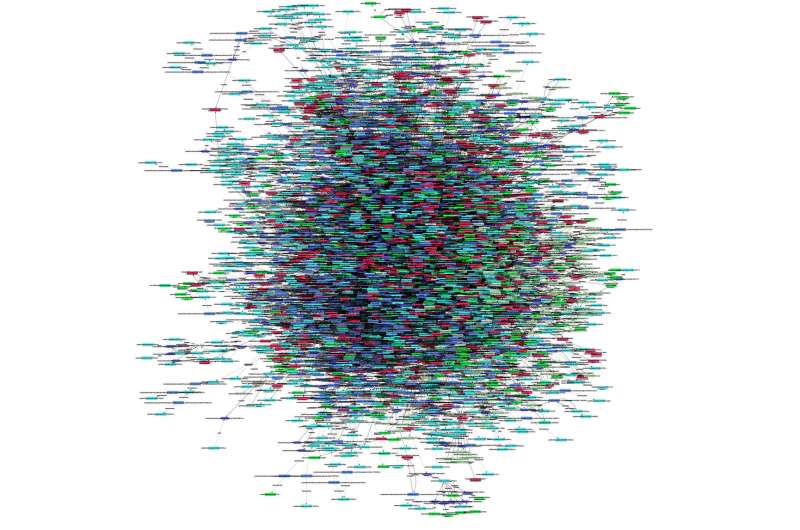Preventive treatment for Alzheimer's and Parkinson's disease

A diagnosis of Alzheimer's disease is devastating for those affected, as there is still no cure for this type of dementia. One hundred years after Alois Alzheimer first described it, we neither have a drug for it, nor do we really understand what causes the severe brain impairment. The EU-based AETIONOMY project could bring about a breakthrough in research: Fraunhofer scientists have teamed up with various partners to identify the early disease mechanisms. They hope to advance research into the causes of this disease using model-based and big data approaches.
More and more people in our aging society suffer from dementia. Some 46 million people are affected worldwide, and it is estimated that this number will rise to around 131 million by 2050. Alzheimer's and Parkinson's are among the most common forms of this disease, and there is still no cure for either one. At best, the available drugs alleviate the symptoms – they do not halt the slow deterioration of the brain. For the pharmaceutical industry, neurodegenerative diseases are a highly relevant, yet risky research area. Billions of euros have already been invested in research, but efforts to develop a drug that effectively treats memory loss have remained unsuccessful. Promising substances have regularly failed in the final (Phase III) clinical studies.
Understanding the molecular causes of Alzheimer's
But why do we still not know what causes the disease? "To date, research and classification has been symptom-based. The medical classification system still used for disease diagnosis today dates back to the mid-19th century. New insights – from the field of molecular biology, for instance – are not adequately accounted for," says Prof. Hofmann-Apitius, Head of the Department of Bioinformatics at the Fraunhofer Institute for Algorithms and Scientific Computing SCAI and academic coordinator of the EU-based AETIONOMY project. This research initiative is intended to change that by classifying neurodegenerative diseases based on their disease mechanisms rather than their clinical symptoms. Thus, the goal of the project is to systematically catalog the molecular disease mechanisms and identify groups of patients in which these disease mechanisms are active. Then they plan to propose specific treatments for these patient groups.
The major challenge with this approach is that the researchers want to understand the molecular causes of Alzheimer's without being able to go back to the point at which the disease first emerged. After all, the dysfunctional processes that cause neurodegenerative diseases can activate the fatal process that ultimately results in dementia as many as 20 to 30 years before clinical symptoms appear.

Identifying new disease mechanisms is a challenge, since the physical processes that trigger a given symptom can differ from one patient to the next. "There is presumably not just one disease mechanism that is identical for all patients, but rather numerous triggers and numerous mechanisms that contribute differently to different individuals' risk of developing the disease," says Hofmann-Apitius. Genetics and epigenetics, for example, play a role, but viral infections in childhood, mental stress and traumatic brain injuries can also increase the risk of a future neurological disease, as several years of relevant epidemiological evidence affirms.
Establishing a mechanism-based classification
Alzheimer's and Parkinson's disease develop at the molecular and cellular level, so this is what AETIONOMY addresses, aiming to establish a mechanism-based taxonomy or classification for the two diseases by the end of 2018. "A reclassification is important if we want to determine which patient needs which drug," says Dr. Phil Scordis from UCB BioPharma, which is jointly leading the project consortium.
The Fraunhofer SCAI researchers are taking a big data approach to the reclassification. "We are using big data to collect all the patient data and publications from clinics, companies and libraries, then linking it to create a knowledge base – which is now available," says Hofmann-Apitius. To this end, the researcher and his team used software they developed themselves: SCAIView enables users to quickly locate aggregated information in large amounts of text. Within minutes, the computer reads millions of publications and translates them into a coherent disease model. The result is a graphical model – a network of causally connected factors. The knowledge base now comprises a network of 3,000 nodes and 35,000 relationships. The collected data can be compared with measurement results from clinical studies and checked for matches, a process specialists call "model validation."
Currently, the researchers are developing an initial taxonomy for classifying patients. There are some indications that it may be possible to identify Alzheimer's and Parkinson's subgroups that are characterized by certain mechanisms. For example, frequent traumatic brain injuries, such as those that occur in American football players, promote the development of Alzheimer's disease. The researchers at Fraunhofer SCAI have already identified 126 disease mechanisms for Alzheimer's disease and 76 for Parkinson's. The results of this research were published in Nature Reviews Drug Discovery. The data was also made available on a publicly accessible web server. "Our new approach is breaking entirely new ground in Alzheimer's research and significantly increasing the chances of finding an effective drug that prevents dementias," concludes Hofmann-Apitius.
A follow-up project that builds on the AETIONOMY research findings is already being planned: it is assumed that previously approved drugs (including, for instance, an asthma drug) that have a neurological side effect in their actual area of use could be used for preventing Alzheimer's disease. Relevant tests will begin soon.



















